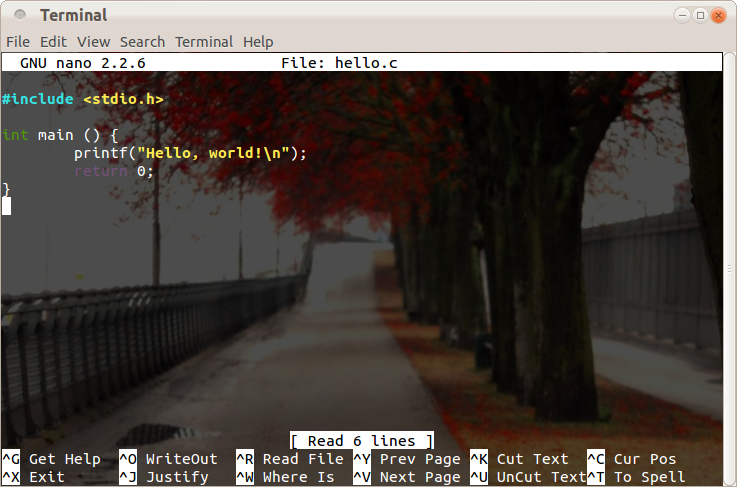Anjuta Ide For Windows
Pollyn This Little Night Rar there. Popular Alternatives to Anjuta for Windows, Mac, Linux, Web, iPad and more.

The scoop on Anjuta DevStudio Anjuta DevStudio has been designed to be simple to operate yet powerful enough to fulfill all your programming needs. We’ve added many new features to Anjuta over the course of its development. Our focus is on delivering power and usability at the same time and making your software development enjoyable without overloading your senses. We intend to continue improving and stabilizing Anjuta to give you the best IDE experience possible. We hope you will have a good time using Anjuta. If not, please help us make it better by reporting bugs and suggestions.
The following screenshot illustrates some of the things you will find in Anjuta. User Interface Anjuta has a flexible and advanced docking system that allows you to lay out all views in whatever way you like. You can drag and drop the views using drag bars and rearrange the layout. The layouts are persistent for each project so you can maintain different layouts for different projects. All dock views are minimizable to avoid clutter in the main window. Minimized views appear as icons on the left side of the main window.
You can configure all menu actions either by typing when the cursor is over a menu item (the usual GNOME way) or through a dedicated shortcut configuration user interface. Plugins Anjuta is very extensible with plugins.
Almost all features in Anjuta are implemented using plugins which can be dynamicaly enabled or disabled. You can choose which plugins should be active for your projects and for the default mode (no-project mode). Like the user interface layout, the set of active plugins is also persistent for each project making it easy to work on projects with various levels of complexity. Using plugins, you can extend Anjuta with your own features.
As Anjuta is written in C, the plugin framework and the API are also in C. However, C++ and Python bindings are under active development. In the near future, it should be possible to write Anjuta plugins in C++ and Python. All plugins in Anjuta are easily replaceable with different plugins implementing similar features.
This allows you, for example, to choose from multiple editors (so far, we have the Scintilla and editors) or to implement a new one suiting your taste (vim/Emacs, anyone?). This applies to any plugin. If Anjuta finds that there are multiple plugins satisfying the same feature requirement, it will prompt the user to select one and will remember the selection. File Manager The integrated file manager plugin behaves more or less like your typical file manager in a tree view. It lists all directories and files in the current project (or a pre-configured directory if there is no project open).
You can choose not to list hidden files and/or files that are ignored by the version control system. The default action (double-clicking) on any file will open it, either within Anjuta if there is a plugin capable of handling it or with an external application configured in your standard desktop.
A file can also be opened with other applications/plugins from the context menu which lists all plugins and applications that are able to open it. In addition, the file manager context menu also lists actions associated with other plugins, such as build actions (associated with the build system plugin), CVS/Subversion actions (associated with version control system plugins) and project actions (associated with the project manager plugin). This allows you to conveniently perform all actions from within the file manager. Project Manager Anjuta has a powerful project manager plugin which can open pretty much any automake/autoconf based project on the planet. It might fail on some oddly configured projects, but as long as the project uses automake/autoconf in a typical way, it should work. The neat thing is that Anjuta does not store any project information beyond what is already available in the project structure. That is, there is no separate project data maintained by Anjuta and all project processing is done directly within the project structure.
This allows a project to be maintained or developed outside Anjuta without any need to convert to or from an Anjuta-specific format. Since technically Anjuta projects are just automake projects, mixed development (with both Anjuta and non-Anjuta users) or switching back and forth between Anjuta and other tools is quite possible without any hindrance. The project manager window displays the project’s automake hierarchy organized into groups of targets.
Groups correspond to directories in your project and targets correspond to normal automake targets (not to be confused with make targets). The project manager window actually has two parts: the lower part shows the complete project hierarchy and the upper part lists important targets directly. Important targets include executable and library targets; the view makes these easily accessible. This is particularly useful in large projects where the hierarchy can be deep and hard to navigate from the tree alone. Targets are, in turn, composed of source files. Each project group and target is configurable in the standard automake way. You can set compiler and linker flags directly for each target, or set configure variables.